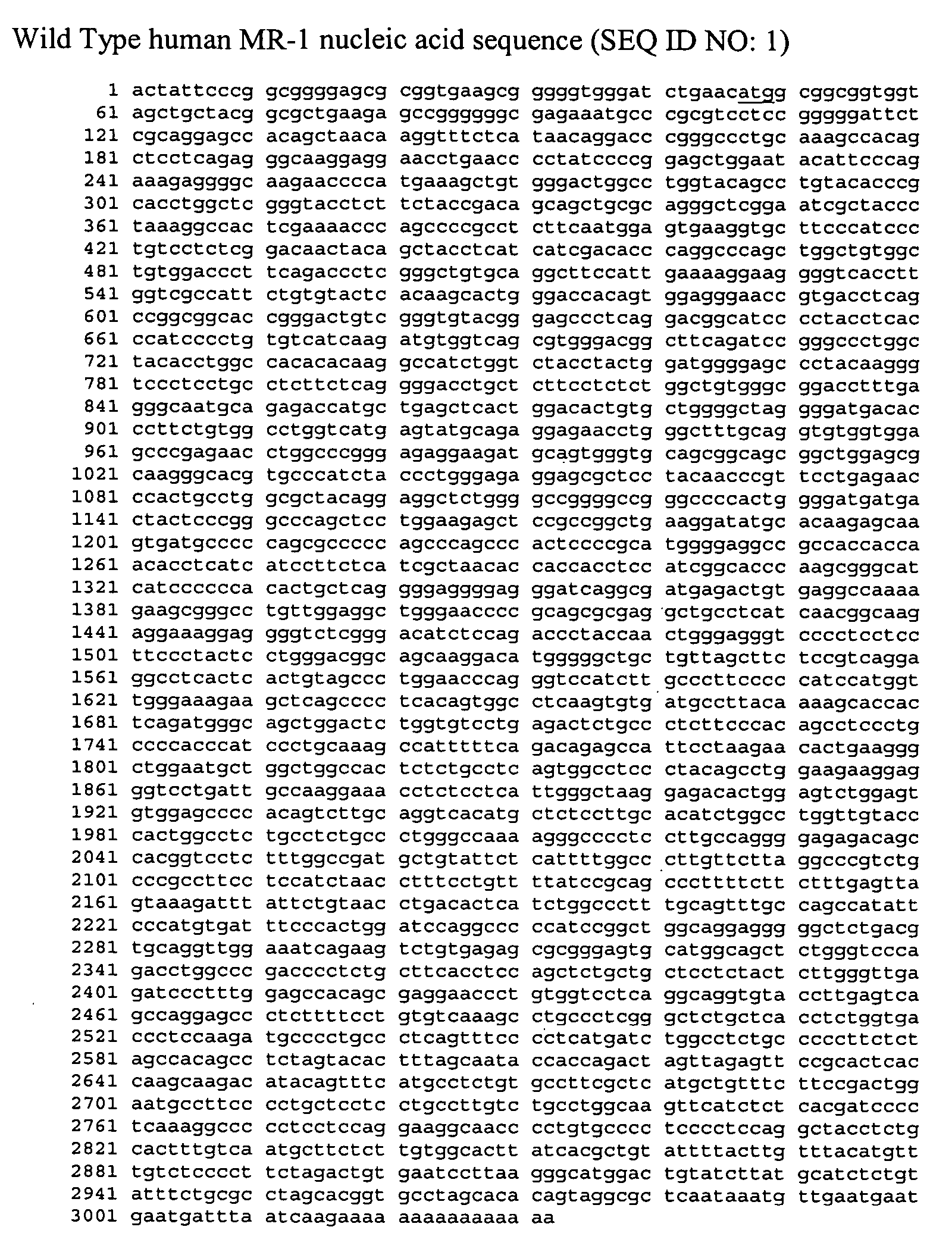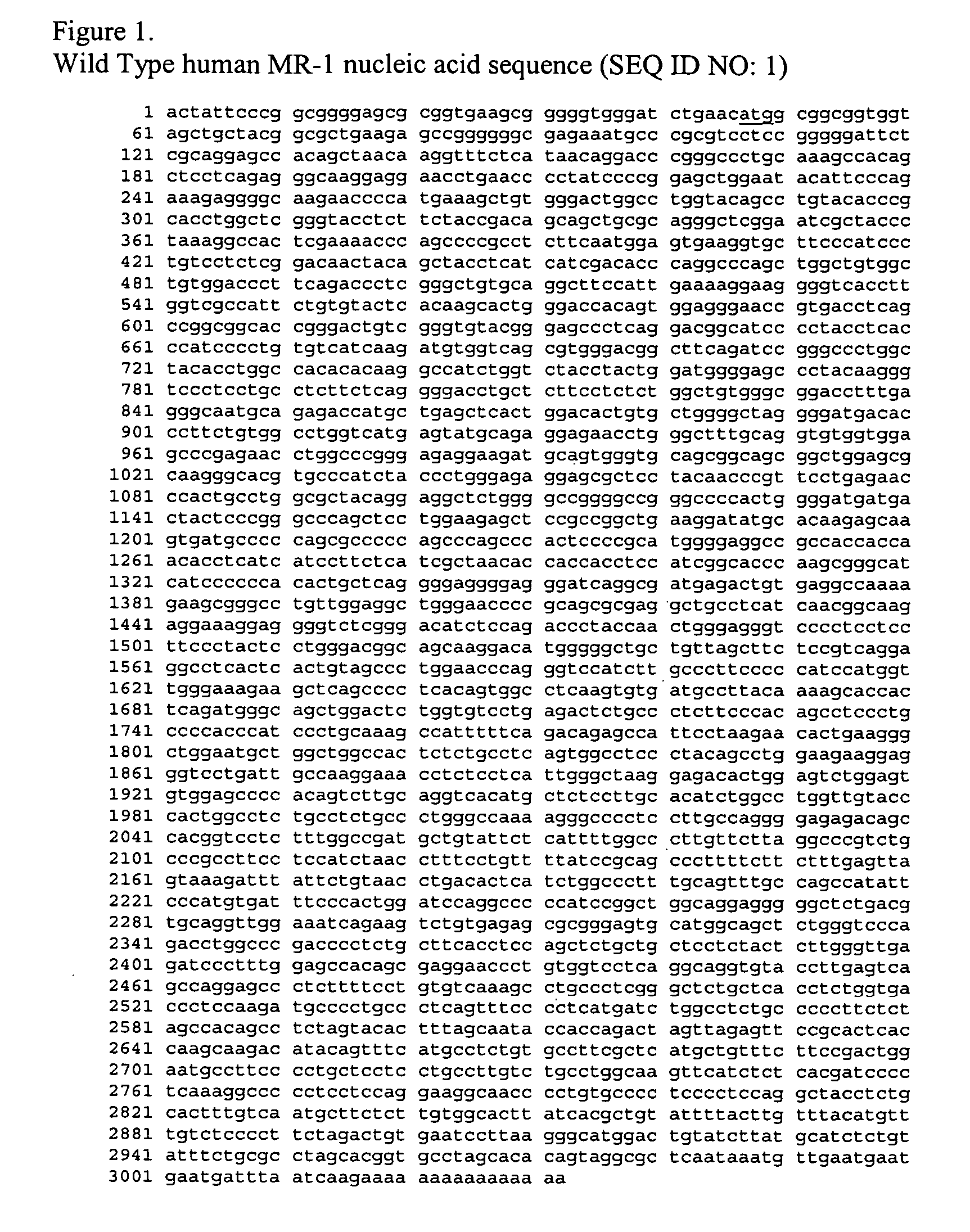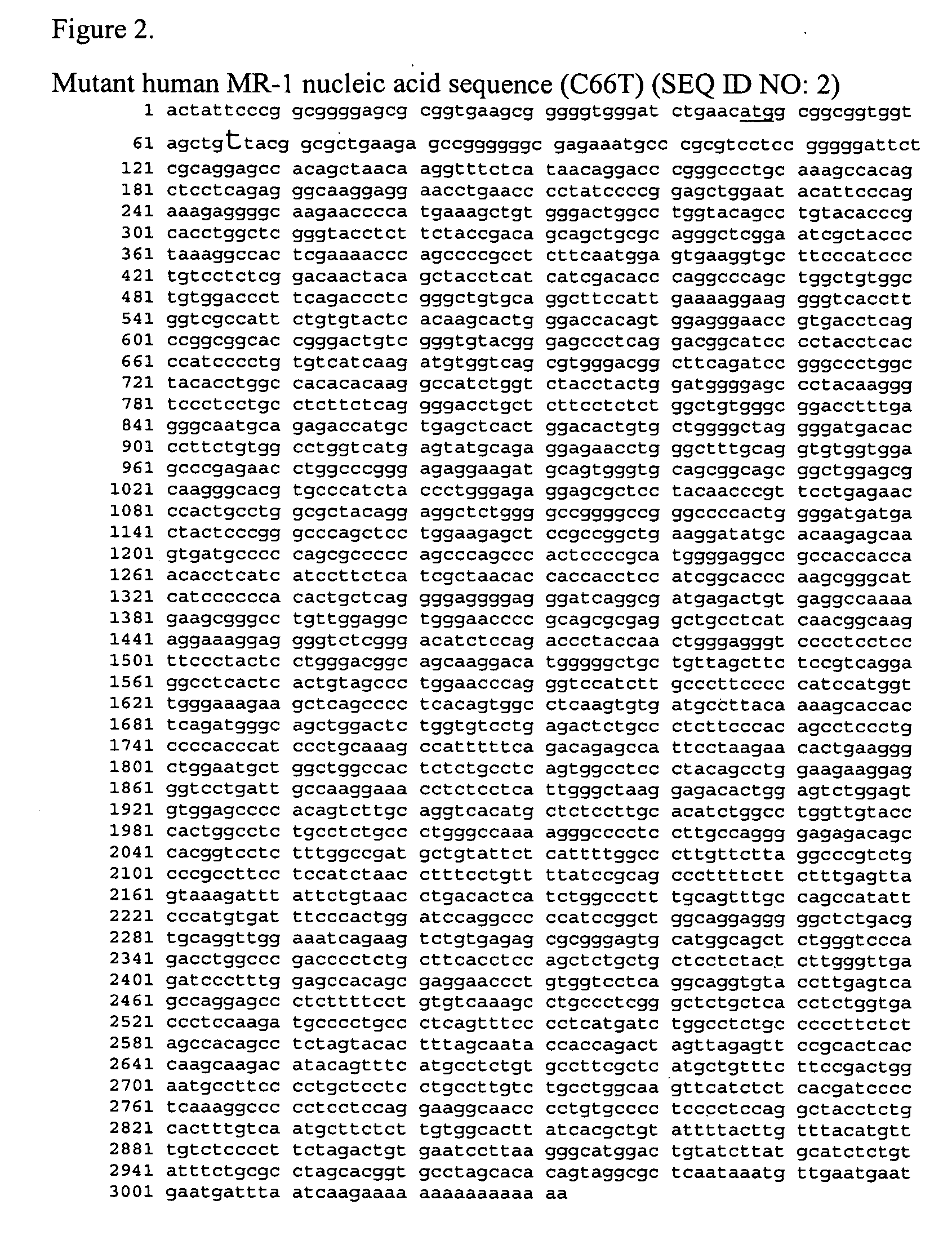Compositions and methods for treating episodic movement disorders and related conditions
a technology of episodic movement and composition, applied in the field of paroxysmal dystonic choreoathetosis and related conditions, can solve the problems of only masking symptoms with medications, no cure for pdc,
- Summary
- Abstract
- Description
- Claims
- Application Information
AI Technical Summary
Problems solved by technology
Method used
Image
Examples
example 1
[0304] This example describes the subjects used in experiments conducted during the course of the present invention. Subjects participated according to the University of Michigan (Ann Arbor) institutional reviewboard-approved protocol. Subjects were diagnosed as either affected with PDC or unaffected prior to genetic linkage and candidate gene analysis. Diagnosis was based on normal developmental milestones, observered descriptions of episodes consistent with nonkinesigenic, nonhypnogenic paroxysmal dyskinesia lasting longer than 5 minutes, normal interictal neurologic examination results, and witnessed episodes that were consistent with PDC. Control subjects were older than 60 years and were determined by neurological examination and structured psychiatric interview to have no personal or family history of neurologic or psychiatric disorders.
example 2
[0305] This example describes the performed genetic linkage analysis. DNA was extracted from peripheral blood leukocytes, microsatellite DNA polymorphisms, and 2-point lod scores calculated as previously described (see, e.g., Rainier S., et al., Am J Hum Genet. 2003, 73:967-971; Zhao X., et al., Nat Genet. 2001, 29:326-331; each herein incorporated by reference in their entireties). Genetic linkage analysis of the PDC-Det kindred (substitution of valine for alanine at amino acid position 9) (see FIG. 9) was reported previously (see, e.g., Fink J. K., et al., Am J Hum Genet. 1996, 59:140-145; herein incorporated by reference in its entirety). For the PDC-Pa kindred (substitution of valine for alanine at amino acid position 7) (see, e.g., FIG. 9), genetic linkage between the disorder and the PDC locus was assessed by the examination of markers D2S295, D2S2210, D2S434, D2S2249, D2S94, D2S173, D2S2179, D2S104, D2S2250, D2S433, D2S2244, D2S2151, and D2S163 using an autosomal dominant mod...
example 3
[0306] This example describes the physical mapping of the PDC locus interval. A physical map across the consensus PDC locus interval (D2S295-D2S163) consisting of 22 overlapping bacterial artificial chromosome elements was created. Subsequently, the Human Genome Project created overlapping contigs (NT—005337 and NT—005289, that were combined into contig NT—005403 that included the 2.4-Mb PDC locus and for which DNA sequences were made publicly available. It was confirmed that the sequence tagged site (STS) content of these contigs by a combination of STS amplification from individual bacterial artificial chromosome elements and Basic Local Alignment Search Tool analysis to determine if the DNA sequences of given STSs were contained in the annotated contig sequence.
PUM
| Property | Measurement | Unit |
|---|---|---|
| temperatures | aaaaa | aaaaa |
| diameter | aaaaa | aaaaa |
| polymorphic | aaaaa | aaaaa |
Abstract
Description
Claims
Application Information
 Login to view more
Login to view more - R&D Engineer
- R&D Manager
- IP Professional
- Industry Leading Data Capabilities
- Powerful AI technology
- Patent DNA Extraction
Browse by: Latest US Patents, China's latest patents, Technical Efficacy Thesaurus, Application Domain, Technology Topic.
© 2024 PatSnap. All rights reserved.Legal|Privacy policy|Modern Slavery Act Transparency Statement|Sitemap



